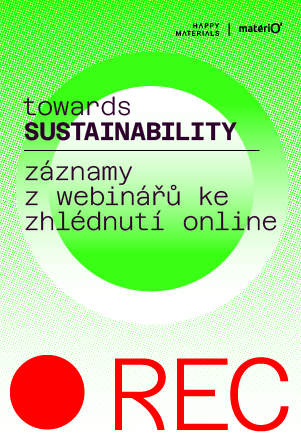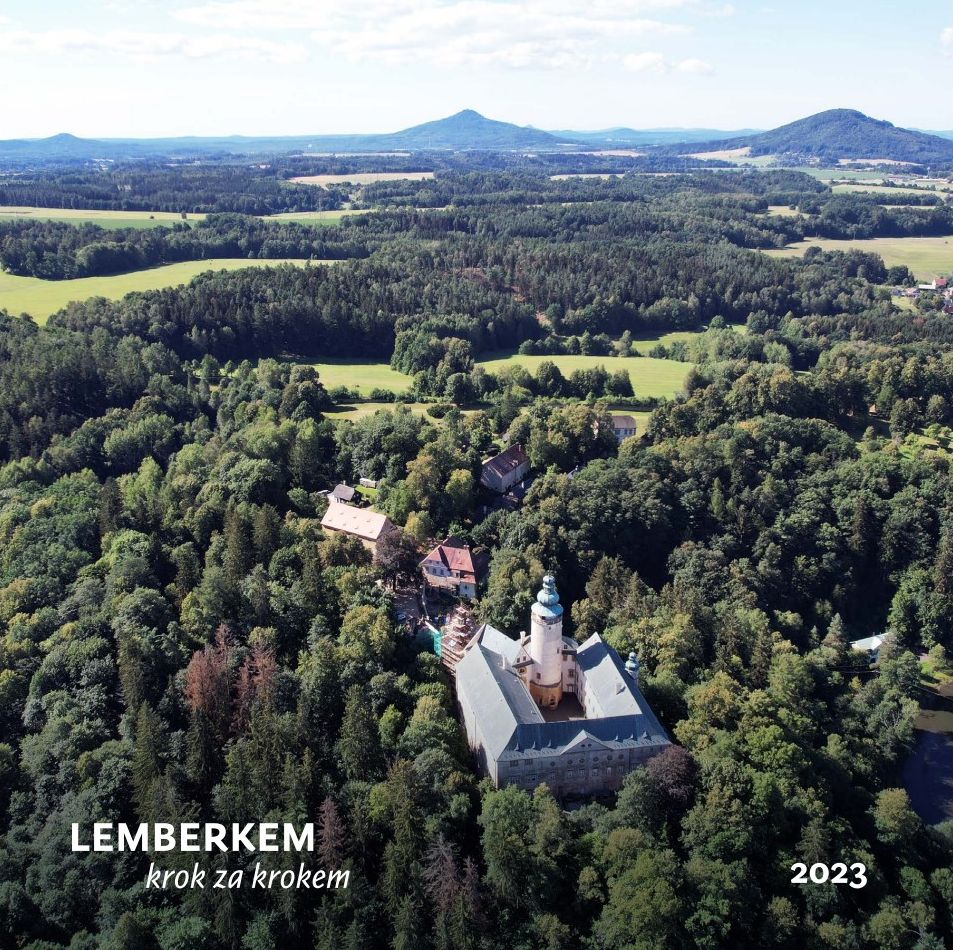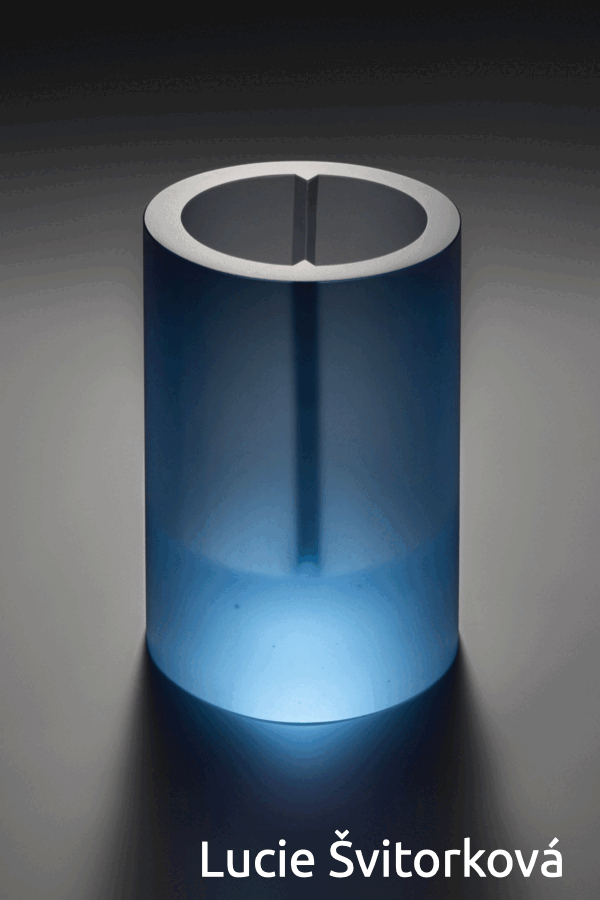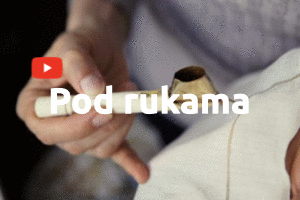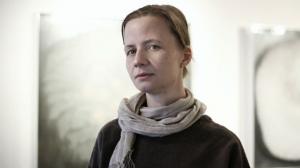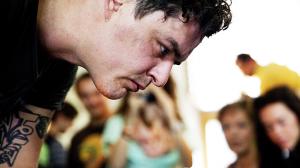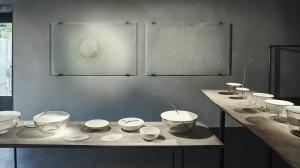Interview
Ondřej Strnadel: Glass and shape to speak common language
Glass exhibited by Ondřej Strnadel at the Klid Neklidu exhibition held at the Kuzebauch Gallery at the end of 2016 may have a myriad of interpretations and many reasons for being. It seems that the variety is a result of the author´s journey against the flow of time.
-
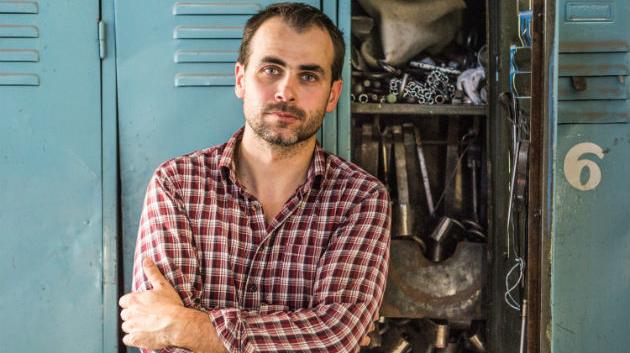 Ondřej Strnadel: Glass and shape to speak common language
Ondřej Strnadel: Glass and shape to speak common language -
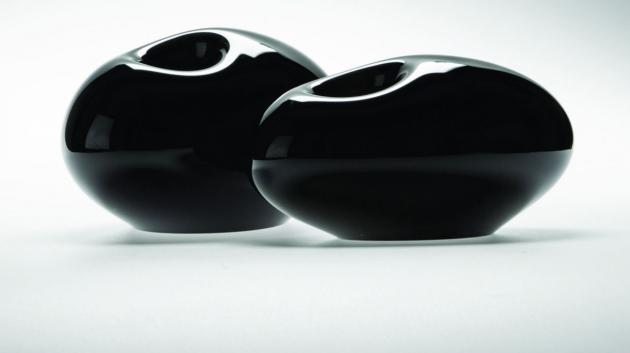 When describing Strnadel’s objects, we can emphasize a number of characteristics: their perfect architecture and aesthetics, perfect balance between the outer and inner structure and details which are an integral part, defining the nature of the piece.
When describing Strnadel’s objects, we can emphasize a number of characteristics: their perfect architecture and aesthetics, perfect balance between the outer and inner structure and details which are an integral part, defining the nature of the piece. -
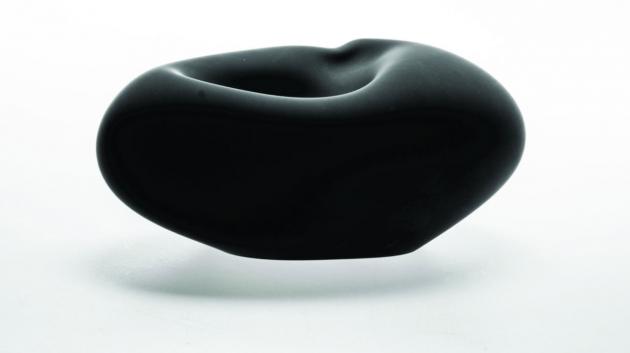 The author combines master craftsmanship with, perfection of a regular shape and freedom of „natural “ deformation of its parts, be it in the walls of a vessel, its insides, or top.
The author combines master craftsmanship with, perfection of a regular shape and freedom of „natural “ deformation of its parts, be it in the walls of a vessel, its insides, or top. -
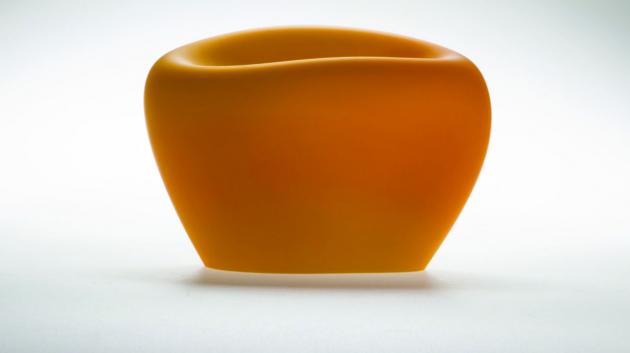 His work is also characterised by reviving the colour of yellow – as the colour of vitality hidden in a corn seed,
His work is also characterised by reviving the colour of yellow – as the colour of vitality hidden in a corn seed, -
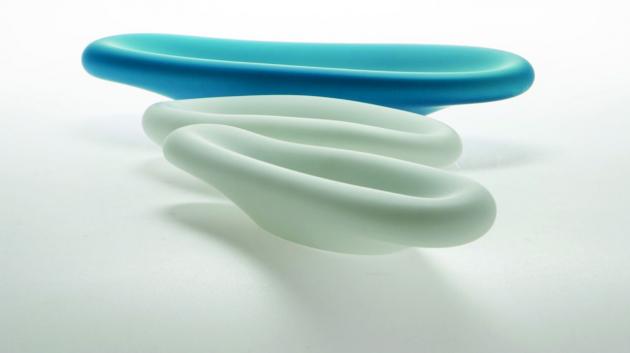 ... as well as turquoise, whose shades elevate a vessel’s architecture to levels white and black cannot reach.
... as well as turquoise, whose shades elevate a vessel’s architecture to levels white and black cannot reach. -
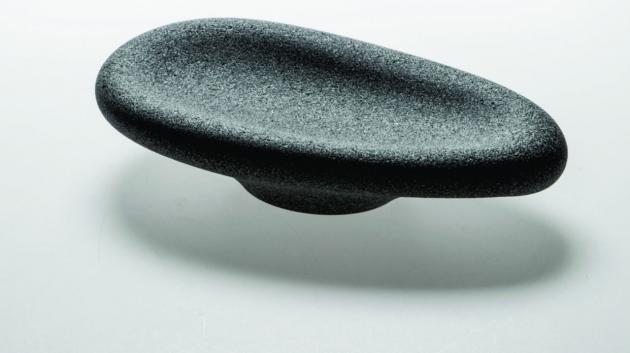 The shapes of bowls, smoothed by abrasive blasting, reminiscent of rounded riverbed pebbles, express something prehistoric, something that existed from the beginning of time without influence by human hand.
The shapes of bowls, smoothed by abrasive blasting, reminiscent of rounded riverbed pebbles, express something prehistoric, something that existed from the beginning of time without influence by human hand.
► českou verzi článku najdete zde
When do your exhibits actually date from and how should we interpret your selection of artefacts to show?
The exhibition displays my recent works made in the past two years and I chose artefacts which come from the Corn series. I´ve been playing around with deformations, they are my current cup of tea. At first, I thought that one “corn” would be enough and let´s move further, but it hasn´t been the case. My artefacts are based on organic shapes, shapes of things i see around me, things I can get hold of and make. What is new, however, is the technology used. To finish the material, I use abrasive blasting and the result resembles you of pebbles. That what I intended to do. As a child, I spent days by the river Bečva around Rožnov. I made little discoveries of abraded glass of various colours and shapes, which was flushed to the river from an old glassmaking factory. I found parts of rubber tyres, too, since there was a tyre production facility upstream from Valašské Meziříči. They were also shaped and finished by the river, which changed their structure. This is my journey up against the flow of time, I keep playing and my artefacts are made from those little discoveries claimed back by the nature. These days, I come back to the river with my son.
Your portfolio clearly shows that you favourite item is a serving dish, a piece most other artists tend to avoid or intentionally ignore. What makes a serving dish so unique? Is it their shape or the “emptiness” inside them? How temping is it to fill the empty space inside?
Most of my items are just vessels. I wish people perceived my vessels more like sculptures, but I´d be equally happy if they just used them and treated them as ordinary vessels. As I´ve already mentioned, I’ve recently been attracted to and inspired by corn seeds and organic shapes in general. By all means, serving dishes should have something inside them, even though this doesn´t exactly concern this particular exhibition; this one is about something else.
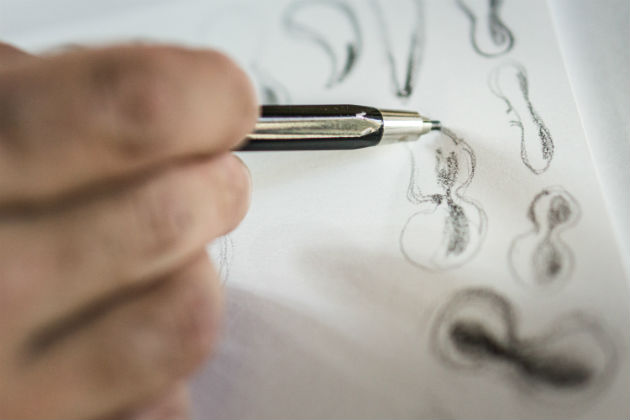
You´ve said that you strive to fill the dishes with stories. Which one is the most important one, at least for you?
It is nothing particular. The most important element is the creative idea, an inspiration which helps me catch the story – that´s what is inside the dish. And then I try to define the link between the inside and the shape. With most shapes, I think about their architecture first. The most interesting question to ask is how to combine the outer appearance and shape with the story inside the dish. The two must function inseparably. Of course, the inside may be an item, which deforms the shape of the dish thus evoking its story. To me, however, the story is based on an inspiration and how it is set within the shape. I will not design an ordinary dish which I don´t expect any story from. I will just buy it.
.jpg)
.jpg)
How do you activate the story inside the dish? Is it by the shape dynamics, the irregular edges, profiled bottom, other items inserted or a partial and managed deconstruction?
For me, it is about inspiration which is dynamic and driven by standard processes which we often miss – drying out of seeds, drying of remains of paint – but my intention is not to transform. I´d put it differently – glass and shape are finding a common language. It is a fast process, I know when the glass mass is melted enough to move and flow and, at a certain point, I just stop it. Subsequently, and it depends on the intensity of your breath and the glass mass´ temperature, I say enough is enough and I cool parts of the mass and heat some other parts, start turning the pipe and I know I´m done. The story inside the vessel is written there while I´m working, it shapes itself randomly assisted by inspiration intuitively aligned with the motion of my hands, my breath, and the process shaping the glass mass.
Your serving dishes tend to be more and more organically shaped. The exact shapes seem to be supressed. Some dished have turned into enclosed objects, hard to tell they are dishes. Why are your interventions inside the object so important? Isn´t it the inside what makes and object into a serving dish thus defining it clearly?
I draw inspiration from landscapes, which are hardly ever as flat as they seem to be. All I do is to recreate the landscape in a certain shape. Except for two metal plated dishes which I initially blew into a mould, all objects exhibited here are blown and free hand shaped. The free hand shaped glass where no mould is used is natural and your intervention is formed by breath. I blow a bit more, in some cases to cause deformations to reach the intended shape, to show what I want to convey. The goal is clear from the very beginning.
.jpg)
Unlike artists who started high with their imagination and only later landed in reality, Strnadel took the opposite direction. His art started from the bottom, from the glassmaking art in the very sense of the word. His is the genuine first-hand experience with the graft and material; he grew outside official artistic circles.
At a certain point in your professional career and artistic development, you said: “ I no longer need to study glass.” And you decided to enrol at the Industrial design studio at Tomáš Baťa University in Zlín. Did industrial design influence your art?
Thanks to the industrial design I can see thing differently now, not only glass, but all items of everyday use. My perception is now different. I also reconfirmed some feelings I had, for example my passion for lamps and glass for everyday use. Industrial design is a discipline close to my heart, but I don´t say no the free creations either. If I was to decide whether I want to go from the industrial design or free art, if I had to make that decision, I can´t tell what my final decision would be. Since I´m a teacher at the Secondary glass art school in Valašské Meziříčí, I can devote my time to both disciplines and I lead my students, my young followers in the trade, to employ both. But I wouldn´t say no to designs made from wood or other materials either.
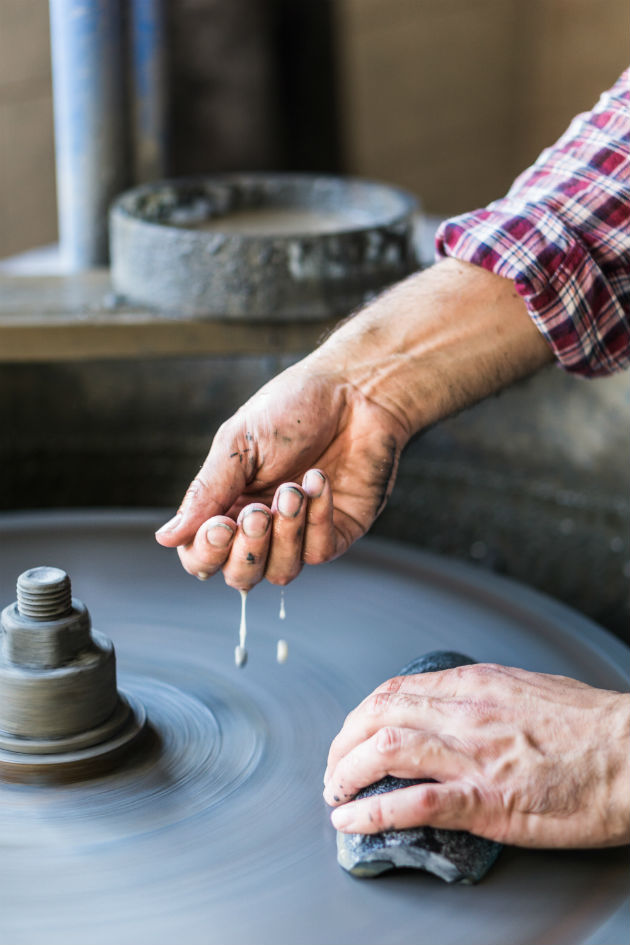
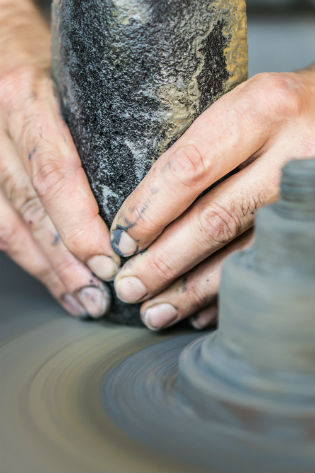
Is it still so that as an artist you are much better off having hands on experience with materials?
Thanks to modern technology, there are many contemporary glassmakers who are successful even though they never worked hands on with glass. But knowledge of technology and limits of glass will give you some advantage, indeed. On the other hand, most designers and artists do well even without personal professional experience with the material they use.
.jpg)
Strnadel studied at the Secondary school of glass art in Valašské Meziříčí and worked as a master glass marker at the glass shop which belongs to the school. His skills and professional erudition helped save many designs of his students and contributed to artefacts designed by world renowned glass artists.
Can visualisation and 3D-printing technology replace the tried and trusted system of “sketch – sampling – prototype – finished product“? And can uniform products of 3D-printing replace the work of a master craftsman?
With purely technical objects, they can. I’ll use 3D when I’m designing a functional lighting fixture, or drinking glass sets. But it is still better to do a few sketches first and only then go to 3D modelling. Luckily it is not necessary as part of the artistic creative process, so drawing and master craftsmanship is irreplaceable wherever human soul landscape exists and where machines are not allowed.
Can this technology help schools and artists save on the cost of creating a glass objects? The raw materials and the glassmaking shop rental are very expensive, as are sampling and other finishing techniques – many artists stopped working with glass for these exact reasons.
Students present visualisations and plaster models. This is wrong, because as a result, they are unable of seeing technology problems glass can present. It’s not my problem, I know both the technology and the craft, and I make things on my own and don’t have to pay for it, that’s my advantage. With glass, a perfect result is never guaranteed – there can be a fault in the glass, a crack, a bubble, that’s always a problem. When this happens and I don’t destroy the piece immediately, I put it on the side. I have a private graveyard, I go back to it every now and then, throw a few things out, but use others to remind me of my mistakes, consider a new technique or another artistic approach. So even unfinished or write-off material has a value, apart from money saved, it has a higher purpose, which we may only get latter, or maybe never.
.jpg)
They say: “Do what you know how to do. Teach what you can’t do, and if you have a talented student, learn as much from them as you can.“ You contradict these ironic sayings – you know how to make glass, you make it and you teach it. You said that your students keep you on your toes and you in turn save them from their own experiments. What situation would your students have to present you with to catch you unprepared? It can happen, glass is a volatile-enough material for that …
(Laughter…) I really don’t know what would have to happen. I can’t think of anything – perhaps techniques I don’t use, fusing or stained glass, for instance. I try to make students pick dissertation topics that are based on techniques they know, like and have perfected during their studies. In the fourth year, students tend to know whether they prefer free-hand shaping, or cold techniques. We show them the direction, but when a student suggests an experiment, something that they haven’t tried yet, we certainly don’t stop them, we go with the idea and help them.
Is glass intelligent?
Glass has soul.
21. 1. 2017 Author: Marie Kohoutová, Photos from Valašské Meziříčí: Tomáš Rubín, Studio photos: Petr Willert, Translated by Patricie Klimešová Vlachová
LATEST COMMENTS
5. 7. 20:04
האופייניים שדימה מנסה מאוד. אשתו גנחה, התקרבה קדימה עם ...
SteveNab - Molten adrenalin
5. 7. 18:22
נקי. ניסיתי להוציא את אליס מהסיפור המלוכלך הזה ...
Williamseids - Molten adrenalin
4. 7. 22:52
https://www.fabrika-hotel.ru/</a>
Chrisdrync - Molten adrenalin
